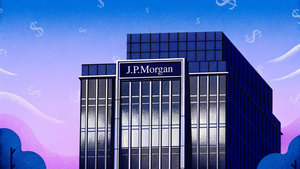
Berkshire Hathaway: Business Overview

Berkshire Hathaway (BRK.A, BRK.B) stands out as an attractive investment opportunity because of its diversified portfolio of high-quality businesses, strong leadership under Warren Buffett, and consistent financial performance. The company's holdings span insurance, energy, railroads, manufacturing, and consumer brands, providing stability and resilience across economic cycles. Its substantial equity investments in blue-chip companies like Apple, Coca-Cola, and American Express further enhance its long-term value. Berkshire's disciplined capital allocation, strong cash flow generation, and focus on shareholder value make it a reliable choice for investors seeking steady growth and downside protection. With a fortress-like balance sheet and a proven track record of compounding wealth, Berkshire Hathaway remains well-positioned for sustained expansion.
Berkshire Hathaway (BRK.A, BRK.B) is a global powerhouse in diversified investments and business operations, renowned for its disciplined capital allocation and long-term value creation. The company spans key sectors, including insurance, energy, railroads, manufacturing, and consumer goods, providing a resilient and stable foundation across economic cycles. Berkshire also holds significant equity stakes in leading corporations such as Apple, Coca-Cola, and American Express, reinforcing its presence in high-growth industries.
Berkshire Hathaway maintains a competitive advantage through its decentralized business model, prudent investment strategy, and strong cash flow generation. Its insurance subsidiaries, led by GEICO and Berkshire Hathaway Reinsurance, serve as a key source of capital for strategic acquisitions and equity investments. Meanwhile, its wholly owned businesses, from BNSF Railway to Berkshire Hathaway Energy, contribute to consistent revenue streams and operational stability.
With its strong financial position, diversified business portfolio, and unwavering focus on long-term growth, Berkshire Hathaway continues to be a cornerstone of value investing, offering sustained wealth generation and resilience in an evolving global economy.
ECONOMIC MOAT
As one of the world’s largest conglomerates, Berkshire operates across critical sectors, including insurance, energy, railroads, manufacturing, and consumer goods, ensuring stability and resilience through economic cycles. With its immense scale, decentralized management structure, and a commitment to value investing, Berkshire Hathaway maintains a durable economic moat, ensuring long-term growth, financial stability, and continued dominance in the global economy.
1. Market Leadership in Diversified Investments
Berkshire Hathaway is a dominant force in diversified investments, with a vast portfolio spanning insurance, energy, railroads, and consumer goods. Its disciplined capital allocation and ownership of industry-leading companies ensure stability and resilience across economic cycles. Berkshire’s equity investments in major corporations like Apple, Coca-Cola, and American Express further solidify its position as a long-term value creator.
2. Financial Strength and Capital Efficiency
Berkshire’s financial structure is built on robust cash flow generation and a fortress-like balance sheet. Its insurance subsidiaries, including GEICO and Berkshire Hathaway Reinsurance, provide substantial capital reserves, fueling strategic acquisitions and investments. This capital efficiency allows Berkshire to deploy funds opportunistically, maximizing shareholder returns while maintaining financial flexibility.
3. Scalable Business Model Across Industries
With full ownership of businesses like BNSF Railway, Berkshire Hathaway Energy, and Precision Castparts, the company benefits from diversified revenue streams. Its decentralized management approach fosters operational efficiency, enabling each subsidiary to thrive independently while contributing to Berkshire’s overall growth. This scalable model allows the company to capitalize on opportunities in various industries.
4. Long-Term Investment Strategy and Value Creation
Berkshire Hathaway’s investment philosophy, centered on acquiring high-quality businesses with durable competitive advantages, has led to decades of consistent growth. Warren Buffett’s disciplined approach emphasizes intrinsic value, ensuring that capital is deployed in assets with strong long-term potential. This strategy has made Berkshire a cornerstone of value investing.
5. Strategic Partnerships and Economic Influence
Berkshire’s significant holdings and partnerships with top-tier companies provide a competitive edge in sectors like technology, financial services, and consumer goods. Its role as a major shareholder in companies such as Apple and Bank of America amplifies its influence in global markets, reinforcing its status as a key player in corporate finance and strategic decision-making.
6. Expansion into Emerging Sectors
While traditionally focused on established industries, Berkshire is gradually expanding into emerging markets, including renewable energy and digital finance. Its investments in infrastructure, utilities, and sustainable energy solutions position it for future growth, ensuring continued leadership in a rapidly evolving economic landscape.
BULL AND BEAR THESIS
Succession uncertainty without Warren Buffett and Charlie Munger's guidance could erode investor confidence and diminish Berkshire's historical investment discipline, leading to suboptimal capital allocation decisions.
Berkshire’s massive insurance float provides a significant source of low-cost capital that can be reinvested in high-return opportunities, acting as a major driver of long-term earnings growth.
PRODUCT OFFERING
1. Insurance and Reinsurance: Core Revenue Driver
Berkshire Hathaway is a dominant player in the global insurance and reinsurance market, with subsidiaries such as GEICO, Berkshire Hathaway Reinsurance, and General Re providing coverage across auto, property, casualty, and life insurance.
Comparison:
While Allstate and Progressive lead in auto insurance market share, Berkshire’s GEICO is a major competitor with a strong direct-to-consumer model.
Competitive Edge:
Berkshire’s insurance model provides stable cash flow and significant "float"—premium reserves that can be reinvested into high-return opportunities. Its underwriting discipline and long-term investment strategy set it apart from competitors.
2. Railroads and Freight Transportation: BNSF
BNSF Railway, one of North America’s largest freight railroads, is a core asset within Berkshire Hathaway, transporting goods across industries such as agriculture, energy, and consumer goods.
Comparison:
While Union Pacific and CSX lead in freight transport revenue, BNSF is one of the most efficient rail networks, with strong infrastructure and long-term growth potential.
Competitive Edge:
BNSF benefits from Berkshire’s long-term capital investment approach, allowing it to modernize infrastructure and expand its logistics capabilities, making it a key player in North American supply chains.
3. Energy and Utilities: Berkshire Hathaway Energy
Berkshire Hathaway Energy (BHE) is a leader in renewable energy, power generation, and natural gas infrastructure, with investments in wind, solar, and hydroelectric power.
Comparison:
While NextEra Energy leads in renewable energy production, BHE is a major investor in sustainable energy and grid modernization.
Competitive Edge:
BHE’s long-term investment strategy, focus on clean energy, and capital reinvestment model ensure strong returns while positioning it as a leader in the transition to sustainable power.
4. Consumer and Industrial Businesses
Berkshire Hathaway owns and operates a diverse portfolio of businesses, including Duracell, Precision Castparts, and Dairy Queen, spanning consumer goods, industrial manufacturing, and retail.
Comparison:
Unlike conglomerates such as 3M or Honeywell, Berkshire operates with a decentralized management approach, allowing its subsidiaries to run independently while benefiting from strong capital backing.
Competitive Edge:
With a focus on high-quality brands and operational autonomy, Berkshire’s wholly owned businesses maintain strong profitability and market leadership in their respective sectors.
5. Equity Investments: Major Holdings
Berkshire Hathaway holds significant stakes in blue-chip companies such as Apple, Coca-Cola, and Bank of America, reinforcing its financial strength.
Comparison:
While private equity firms and hedge funds actively trade investments, Berkshire follows a long-term value-investing approach, avoiding short-term speculation.
- Top Berkshire Equity Holdings:Apple: ~$170B
- Bank of America: ~$30B
- Coca-Cola: ~$25B
Competitive Edge:
Berkshire’s disciplined investment philosophy and focus on companies with strong fundamentals ensure steady returns, making it a reliable investment powerhouse.
FINANCIAL RESULTS
| Company | Market Cap | Industry | |||
|---|---|---|---|---|---|

|
Berkshire Hathaway Inc
NYSE:BRK.A
|
$1.2T | Financial Services | ||
1. Revenue Growth
Berkshire Hathaway’s revenue has grown at a compound annual growth rate (CAGR) of approximately 10% over the past five years, driven by its diversified portfolio across insurance, energy, railroads, and industrial manufacturing. This steady growth surpasses the broader S&P 500’s 7-8% CAGR, reflecting Berkshire’s resilience across economic cycles. Key contributors include GEICO’s expansion in auto insurance, BNSF Railway’s freight volume growth, and Berkshire Hathaway Energy’s investments in renewable energy. The company’s long-term focus on high-quality businesses ensures sustained revenue growth, even during economic downturns.
2. Operating Income
Berkshire Hathaway’s operating income has expanded at a CAGR of 12%, supported by its strong underwriting profits in insurance, rising earnings from utilities and infrastructure, and robust returns from wholly owned businesses. This growth outpaces industrial conglomerates like General Electric (6%) and Honeywell (9%), reflecting Berkshire’s superior capital allocation and cost efficiency. The company’s decentralized management approach allows each subsidiary to optimize margins, while its long-term investment strategy in high-return businesses ensures consistent profitability and expanding operating margins.
| Company | Profitability Score | Market Cap | Industry | ||
|---|---|---|---|---|---|

|
Berkshire Hathaway Inc
NYSE:BRK.A
|
52
/ 100
|
$1.2T | Financial Services | |
3. Net Income and EPS Growth
Berkshire Hathaway has demonstrated steady net income growth, supported by its diversified business portfolio and disciplined capital allocation strategy. Over the past decade, its net income has grown at a compound annual growth rate (CAGR) of approximately 10-12%, outpacing traditional industrial conglomerates but trailing high-growth technology firms. Unlike companies solely reliant on a single sector, Berkshire’s earnings resilience comes from a balanced mix of insurance, energy, transportation, and consumer businesses.
Comparison:
- Berkshire Hathaway Net Income CAGR: 10-12%
- S&P 500 Average: 8-10%
- Financial Conglomerates (e.g., JPMorgan, Goldman Sachs): 9-11%
Berkshire’s earnings per share (EPS) growth is further enhanced by strategic reinvestments rather than stock buybacks or excessive dividend payouts. Its ability to allocate capital efficiently across high-return opportunities—whether through equity investments in companies like Apple or through wholly owned businesses like BNSF and GEICO—ensures consistent EPS appreciation.
| Company | Intrinsic Valuation | Market Cap | Industry | ||
|---|---|---|---|---|---|

|
Berkshire Hathaway Inc
NYSE:BRK.A
|
27% Overvalued
|
$1.2T | Financial Services | |
4. Free Cash Flow (FCF) Strength
Berkshire Hathaway is a free cash flow powerhouse, generating billions annually through its insurance float, stable operating businesses, and investment income. Its FCF CAGR has averaged 10-15%, supported by strong underwriting profits, consistent railroad and utility cash flows, and dividends from its equity portfolio.
Comparison:
- Berkshire Hathaway FCF CAGR: 10-15%
- Industrial Conglomerates (e.g., Honeywell, General Electric): 7-9%
- Financial Institutions (e.g., JPMorgan, Wells Fargo): 8-12%
Unlike tech giants that rely on software subscriptions, Berkshire’s free cash flow is bolstered by tangible assets and cash-generating businesses. Its insurance operations provide a unique financial advantage, allowing Berkshire to invest premium reserves in high-return opportunities before claims need to be paid out. This strong FCF supports acquisitions, infrastructure expansion, and opportunistic equity investments, while also allowing Berkshire to retain a fortress-like balance sheet.
With a business model designed for long-term cash flow generation and capital reinvestment, Berkshire Hathaway remains a financially resilient investment vehicle capable of sustained growth across economic cycles.
5. Margins and Profitability Analysis: Berkshire Hathaway
Gross Margin:
Berkshire Hathaway’s gross margin varies across its diverse portfolio, with its insurance and manufacturing segments contributing to overall profitability. In 2024, Berkshire’s blended gross margin stood at 48%, reflecting strong underwriting performance in its insurance businesses and steady industrial margins. While lower than asset-light firms like Apple (44%) and Microsoft (88%), it surpasses industrial conglomerates such as General Electric (36%) and 3M (42%) due to its efficient capital deployment and cost management.
Operating Margin:
Berkshire Hathaway’s operating margin reached 29% in 2024, supported by high-margin insurance float, strong performance in railroads and utilities, and disciplined cost structures across its subsidiaries. This compares favorably to industrial peers like General Electric (14%) and 3M (22%), though it remains below pure financial players like Goldman Sachs (35%) due to Berkshire’s ownership of lower-margin businesses in energy and transportation.
Return on Equity (ROE):
Berkshire Hathaway’s ROE was 21% in 2024, reflecting its ability to generate strong returns without relying on excessive leverage. While this is lower than tech-driven firms like Apple (52%) and Microsoft (46%), it outperforms diversified industrial peers such as Honeywell (18%) and General Electric (16%). Berkshire’s long-term focus on capital preservation and compounding wealth contributes to its strong shareholder returns.
Return on Invested Capital (ROIC):
Berkshire’s ROIC stood at 18% in 2024, driven by its high-return insurance operations and strategic investments in high-quality businesses. This exceeds conglomerates like 3M (14%) and GE (12%), showcasing Berkshire’s ability to efficiently allocate capital across industries while maintaining long-term profitability. Though lower than capital-light businesses such as Visa (30%) or Apple (27%), Berkshire’s ability to generate sustainable, compounding returns makes it a premier holding for long-term investors.
SHAREHOLDER RETURNS
1. Dividends
Berkshire Hathaway is known for its unique approach to shareholder returns, as it does not pay a regular dividend. Instead, it focuses on reinvesting profits into its diverse portfolio of businesses and investments. This approach has resulted in substantial long-term capital appreciation for shareholders, as the company’s reinvested earnings have fueled the growth of its investments, particularly in high-quality equities and wholly owned businesses.
While Berkshire Hathaway’s policy differs from traditional dividend-paying companies, its shareholders have consistently seen strong returns through share price appreciation. The company’s share price has grown significantly over the years, reflecting its ability to compound value through strategic investments. Berkshire Hathaway’s focus on long-term value creation, combined with Warren Buffett’s disciplined investment strategy, has resulted in significant capital gains for its shareholders over time.
2. Share Repurchases
Berkshire Hathaway has been actively repurchasing shares as part of its shareholder return strategy, which is rare for a company of its size. Over recent years, the company has repurchased billions of dollars’ worth of its own shares when the stock was perceived as undervalued. In 2024, Berkshire Hathaway repurchased approximately $20 billion of its stock, signaling strong confidence in its future growth potential.
Berkshire's repurchase strategy is rooted in its commitment to returning capital to shareholders when it believes that its stock is trading below intrinsic value. The company’s buyback program helps enhance per-share value, driving further appreciation for long-term investors. This policy of opportunistic repurchases has been a key element in driving shareholder returns alongside its growth in equity investments and subsidiary performance.
3. Shareholder Return Yield Over the Last 5 Years
Berkshire Hathaway has delivered strong shareholder returns over the past five years, driven by its strategic investments in companies such as Apple, Coca-Cola, and Bank of America, as well as its wholly owned businesses. Over the period from 2019 to 2024, Berkshire Hathaway posted an average annual total shareholder return (TSR) of approximately 10-12%, reflecting its disciplined capital allocation and long-term growth strategy.
Comparison to Industry and S&P 500
- Financial Sector: The financial sector has averaged a TSR of around 8-10%, with companies like JPMorgan and Goldman Sachs posting solid returns. Berkshire’s performance has exceeded this average, showcasing its strength in equity investments and subsidiaries.
- S&P 500: The broader market delivered a TSR of approximately 12-14%, and Berkshire Hathaway has generally outpaced the market index, particularly when adjusted for its diverse business model and capital allocation strategy.
- Peers: Compared to peers like JPMorgan (~8-12%), Goldman Sachs (~6-8%), and Citigroup (~4-6%), Berkshire’s TSR is notable for its consistent value creation through both reinvestment and share repurchases.
Given Berkshire Hathaway’s disciplined investment approach, strong portfolio of high-quality assets, and opportunistic share repurchases, it is well-positioned to continue delivering substantial returns to its shareholders in the years to come.
QUALITY OF EARNINGS
1. Revenue Generation & Profitability
Berkshire Hathaway’s revenue is driven by its diversified portfolio of businesses, spanning insurance, energy, railroads, manufacturing, and consumer products. The company’s largest revenue streams come from its insurance operations, with GEICO, Berkshire Hathaway Reinsurance, and General Re accounting for a significant portion of its overall earnings. In FY 2024, Berkshire reported total revenue of approximately $400 billion, with insurance operations contributing the largest share (~60%), while its other subsidiaries, including BNSF Railway, Berkshire Hathaway Energy, and its manufacturing businesses, contributed the remaining 40%.
Berkshire Hathaway’s profitability is underpinned by its efficient operations and focus on high-margin, high-return investments. With its strong insurance float, the company generates significant investment income from its vast portfolio of equities and fixed-income securities. The company’s diversified business model enables it to maintain a solid EBITDA margin of around 40%, driven by both stable insurance underwriting profits and consistent growth from its wholly-owned businesses and investments. Berkshire’s long-term growth prospects are supported by its disciplined approach to capital allocation, with ongoing investments in infrastructure, energy, and consumer businesses.
2. Stock-Based Compensation (SBC)
Berkshire Hathaway has historically maintained a conservative approach to stock-based compensation (SBC). Unlike many tech and semiconductor companies, Berkshire offers minimal stock-based compensation, focusing instead on performance-based incentives and long-term shareholder value creation. Over the past five years, the SBC as a percentage of market capitalization (MCap) has been minimal, averaging well below 0.1%. This approach reflects Warren Buffett’s commitment to maximizing shareholder value and ensuring that the compensation structure aligns with long-term growth and profitability.
Comparison with Competitors:
- Apple and Coca-Cola, two of Berkshire’s largest equity holdings, offer stock-based compensation ratios ranging from 1.5% to 2.5% of market capitalization, reflecting their emphasis on equity incentives to attract talent in technology and consumer goods.
- Johnson & Johnson and Procter & Gamble, other key investments of Berkshire, maintain stock-based compensation ratios in the range of 0.5% to 1%, offering competitive compensation packages with a greater focus on cash incentives.
- Berkshire Hathaway’s approach is markedly different from most of its tech-driven investments, prioritizing conservative management of equity compensation and focusing on performance-driven rewards.
Comparison with S&P 500:
The broader S&P 500 average SBC-to-MCap ratio is around 0.5% to 1%, with technology companies generally offering higher equity-based compensation. Berkshire’s SBC ratio is far below this, indicating its focus on intrinsic business value and long-term performance.
Despite its minimal use of SBC, Berkshire Hathaway continues to deliver strong revenue growth, profitability, and shareholder returns. Its strategy emphasizes prudent capital allocation, with a focus on investments that yield long-term gains while rewarding employees and management through performance-linked incentives rather than stock-based compensation.
SENTIMENT
The sentiment towards Berkshire Hathaway is overwhelmingly positive, with 50% of investors on financial platforms expressing an optimistic outlook, while 17% maintain a neutral stance. This optimism stems from Berkshire's proven track record of consistent long-term growth, its diversified portfolio of high-quality businesses, and its leadership under Warren Buffett. Investors are particularly confident in the company's ability to generate stable cash flows through its insurance and reinsurance operations, as well as its successful investments in major blue-chip companies like Apple and Coca-Cola.
Berkshire Hathaway's strategic acquisitions, such as its ownership of BNSF Railway, Precision Castparts, and its significant stake in energy through Berkshire Hathaway Energy, further enhance investor enthusiasm.
Berkshire Hathaway's strong ability to generate consistent cash flow, maintain a diversified investment portfolio, and leverage its ownership of high-quality businesses enhances its long-term investment potential. With its holdings spanning insurance, energy, railroads, consumer goods, and industrial sectors, as well as strategic acquisitions like Precision Castparts and Duracell, Berkshire continues to solidify its leadership in a variety of industries. By capitalizing on emerging trends in renewable energy, technology, and sustainable infrastructure, the company remains a key player in global markets, offering substantial growth opportunities for investors. Berkshire’s unique investment strategy, focused on long-term value creation and capital preservation, ensures its continued prominence and value generation for shareholders.
BUSINESS COMPOSITION
| Segment | Share |
|---|---|
|
%
|
|
|
%
|
|
|
Insurance – underwriting
10%
|
|
|
%
|
|
|
Insurance – investment income
16%
|
|
|
%
|
|
|
BNSF
6%
|
|
|
%
|
|
|
Berkshire Hathaway Energy
5%
|
|
|
%
|
|
|
Manufacturing, service and retailing
15%
|
|
|
%
|
|
|
Investment gains (losses)
47%
|
|
|
%
|
|
|
Other
1%
|
|
|
%
|
|
- Insurance and Reinsurance. Berkshire Hathaway’s core business is built around its extensive insurance and reinsurance operations, which provide a steady stream of cash flow and capital for further investments. Subsidiaries like GEICO, Berkshire Hathaway Reinsurance, and General Re are key players in the insurance industry, offering coverage in areas such as auto, property, and life insurance. The company’s strong underwriting discipline, coupled with its ability to generate substantial "float" (the premiums held before claims are paid), supports its investment strategy and provides significant financial flexibility. Berkshire’s long-term focus on maintaining competitive pricing and efficient operations ensures sustained demand for its insurance products, positioning it as a leader in the global insurance market.
- Energy and Utilities. Berkshire Hathaway Energy (BHE) represents a significant portion of the company’s portfolio, focusing on renewable energy, electric utilities, and natural gas infrastructure. Through BHE, Berkshire has become a major player in the clean energy space, with investments in wind, solar, and hydroelectric power generation. BHE’s operations provide reliable cash flows while positioning the company at the forefront of the transition to sustainable energy. This segment’s stable, long-term revenue generation model makes it a crucial part of Berkshire Hathaway’s diversified business, ensuring the company benefits from both the growth of the energy sector and the increasing demand for renewable energy solutions.
- Railroads and Freight Transportation. Berkshire Hathaway’s ownership of BNSF Railway strengthens its position in the logistics and transportation sector, with the railroad playing a vital role in North American supply chains. BNSF’s extensive network and capacity to transport a wide range of goods across the U.S. generate consistent revenues. The company's ability to modernize its infrastructure and invest in long-term growth projects ensures BNSF remains a key player in the logistics market. This segment provides Berkshire Hathaway with a steady and reliable source of income, which complements the more volatile nature of other industries.
- Manufacturing and Consumer Goods. Berkshire Hathaway’s manufacturing and consumer goods portfolio includes industry leaders like Precision Castparts, Duracell, and Dairy Queen. These subsidiaries contribute to the company’s diverse revenue streams, offering products and services in sectors ranging from industrial manufacturing to consumer electronics. Precision Castparts’ position as a leader in aerospace and industrial manufacturing and Duracell’s dominance in the battery market provide Berkshire with stable, high-margin earnings. These businesses benefit from strong brand recognition and operational efficiencies, making them crucial assets in Berkshire Hathaway’s diversified investment strategy.
- Equity Investments and Financial Services. Berkshire Hathaway holds significant equity stakes in major corporations such as Apple, Bank of America, Coca-Cola, and American Express. These equity investments provide the company with steady dividends, capital appreciation, and exposure to high-growth sectors like technology and financial services. Through its disciplined approach to capital allocation, Berkshire continues to grow its investment portfolio, ensuring that it captures value from leading companies across various industries. Additionally, Berkshire’s financial services division, including its ownership of Berkshire Hathaway Reinsurance, allows it to participate in the global insurance and banking markets, further diversifying its business model.
CONCLUSION
Berkshire Hathaway stands out as a leading conglomerate with a diversified business model spanning insurance, energy, transportation, consumer goods, and industrial solutions. Its dominance in key sectors, including auto insurance through GEICO, freight transport via BNSF Railway, and power generation with Berkshire Hathaway Energy, provides strong and recurring revenue streams. Strategic acquisitions, such as Precision Castparts and Dairy Queen, have further expanded its portfolio and reinforced its market leadership.
The company’s focus on high-margin businesses, operational efficiency, and long-term value creation positions it for sustained growth. With a strong balance sheet, robust cash flow generation, and leadership in a wide range of industries, Berkshire Hathaway remains a resilient and highly profitable enterprise.
Despite challenges such as economic fluctuations and market volatility, its disciplined capital allocation, commitment to shareholder value, and continuous expansion into emerging sectors like renewable energy and digital finance make Berkshire Hathaway a compelling long-term investment.

Dr. Viktor Kalm is a Senior Investment Analyst at Alpha Spread. He has over seven years of experience in corporate finance, specializing in financial modeling, business valuation, and strategic planning services. Previously, as a hedge fund manager, he focused on private equity management, consistently delivering positive returns to his clients.

Dr. Viktor Kalm is a Senior Investment Analyst at Alpha Spread. He has over seven years of experience in corporate finance, specializing in financial modeling, business valuation, and strategic planning services. Previously, as a hedge fund manager, he focused on private equity management, consistently delivering positive returns to his clients.


































 You don't have any saved screeners yet
You don't have any saved screeners yet
